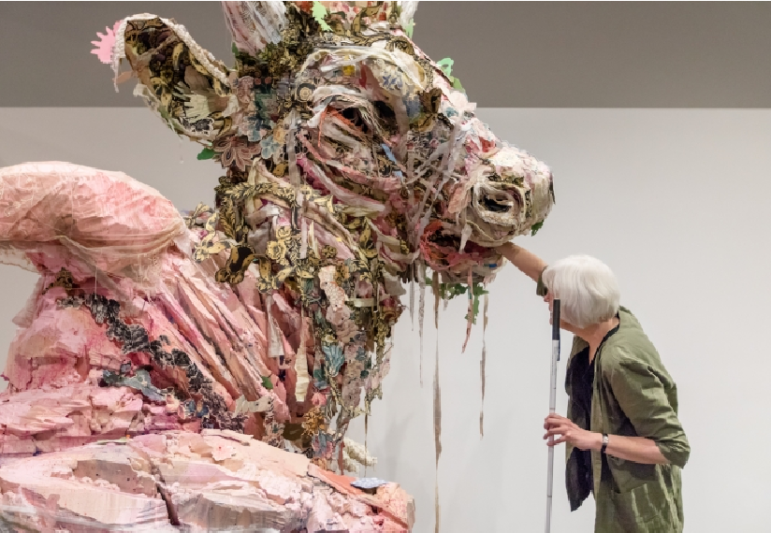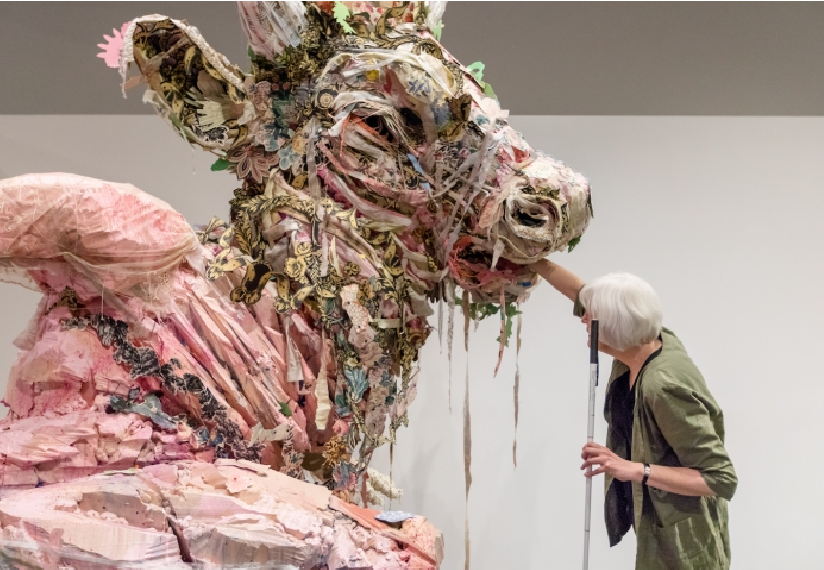
The “Please Touch the Art” exhibit at the Mosesian Center of the Arts received an award from the Sasaki Foundation.
Watertown-based Sasaki Foundation presented its inaugural design awards, including an exhibit at the Mosesian Center for the Arts.
One of the awards went to an art exhibit, with a curator’s talk and panel discussion at Mosesian Center for the Arts.
“Please Touch the Art” is a tactile art exhibit and companion humanities exhibit accompanied by a curator’s talk and panel discussion at the Mosesian Center for the Arts. The exhibit will provide a multi-sensory art experience that is accessible to all audiences, taking special care to provide an immersive, tactile experience for visually impaired community members. Blind scholar and More than Meets the Eye, What Blindness Brings to Art author Georgina Kleege will guest curate. The exhibit will include a gallery that is dedicated to the history of accessibility in arts programming.
The following information came from the Sasaki Foundation:
The Sasaki Foundation announced the winning teams for its inaugural Sasaki Foundation Design Awards. The Design Awards are an annual competition to showcase projects that support and drive interdisciplinary innovation and empower our local communities.
Each year, the Sasaki Foundation announces research topics that address current trends and inequities in design. In 2018, its inaugural year, the Foundation focused on Proactive Approaches to Climate Adaptation; New Models for Housing; Innovation in Transit & Access to Mobility Choices; and Creative Community Building.
“We were extremely impressed by the response we received from applicants, our partners, and communities,” says Alexandra Lee, Executive Director. “The Foundation is excited to fund innovative projects focused on bringing new, local solutions to global challenges.”
Applicants proposed projects to win cash awards and office space at the Incubator at Sasaki. In this first year, the Foundation received 140 inquiries and two dozen applications from multi-member teams. The projects represented fifteen organizations, seven teams of individuals, nine Boston communities, two Greater Boston cities, and three Gateway Cities.
“We had a great team of judges, culled from organizations like Harvard, MIT, Microsoft, Northeastern, and others, who evaluated the teams on how equitable, innovative, and impactful their ideas were,” says Mary Anne Ocampo, Chair of Sasaki Foundation’s Board of Trustees. “We are excited to welcome these new teams to the Incubator this fall to tackle projects that will empower underserved communities within Massachusetts.”
The names of the 2018 Design Award winners are:
Charles River Floating Wetlands
A new approach to reduce harmful algal blooms by enhancing zooplankton populations using floating wetlands along the Charles River.
Eastie for Eastie
An effort to promote land pooling, land readjustment, and community land trusts as alternatives to displacement due to rising sea levels and development pressure in East Boston.
G | Code House
A co-living, -learning, and -working community in Roxbury providing young women of color with technology training and work opportunities.
The ECHO Locator
A new digital interface, the ECHOLocator, will provide housing choice voucher holders with customizable information on communities that are both affordable and serve their public transit needs.
Please Touch the Art
A tactile art exhibit in Watertown providing multi-sensory, immersive, tactile experiences for visually impaired community members.
For more information, go to: www.sasakifoundation.org.
About Sasaki Foundation
The Sasaki Foundation is a 501(c)3 organization committed to empowering communities by tackling the issue of inequity in design. The Foundation works with communities, government, practitioners, and others to support research and programs that diversify the voices involved in discussing the built environment.
